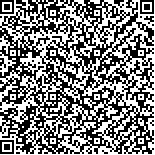| 引用本文: |
蒋素容,武姿含,高音来,陈芯仪,何灏龙,陈楚淘,田浩梅.针刺大椎、百会、人中穴对脑缺血再灌注损伤大鼠脑组织p-VEGF蛋白表达的影响[J].湖南中医药大学学报,2018,38(11):1262-1266[点击复制] |
|
| |
|
|
| 本文已被:浏览 3107次 下载 1631次 |
| 针刺大椎、百会、人中穴对脑缺血再灌注损伤大鼠脑组织p-VEGF蛋白表达的影响 |
| 蒋素容,武姿含,高音来,陈芯仪,何灏龙,陈楚淘,田浩梅 |
| (湖南中医药大学, 湖南 长沙 410208) |
| 摘要: |
| 目的 观察针刺大椎、百会、人中穴对脑缺血再灌注损伤大鼠脑组织p-VEGF蛋白表达的影响,探讨针刺对脑缺血再灌注损伤的部分作用机制。方法 从60只大鼠中随机选择24只,再将之随机分成正常组和假手术组,12只/组,其余36只大鼠参照Zea Longa线栓法制备大脑中动脉栓塞模型,造模成功后再随机分为模型组、针刺组、依达拉奉组,12只/组。造模大鼠生命体征平稳后,正常组、假手术组及模型组大鼠只捆绑不针刺;针刺组大鼠针刺大椎、百会、人中三穴,留针30 min;依达拉奉组大鼠按3 mg/kg(稀释至1mL)腹腔注射依达拉奉,均为每12小时1次;首次治疗前及末次治疗后,对大鼠进行神经功能缺损评分;6次治疗完成后处死大鼠,行TTC染色观察脑梗死面积比,采用Western blot法检测p-VEGF蛋白表达水平。结果 与正常组及假手术组比较,模型组大鼠神经功能缺损评分及脑梗死面积比显著上升(P<0.01),提示模型制备成功。与模型组比较,针刺组及依达拉奉组大鼠神经功能缺损评分及脑梗死面积比下降(P<0.01);同时,与模型组比较,针刺组及依达拉奉组大鼠p-VEGF蛋白表达上升(P<0.01)。针刺组与依达拉奉组比较,大鼠神经功能缺损评分、脑梗死面积比及p-VEGF蛋白表达均无差异(P>0.05)。结论 针刺大椎、百会、人中穴能明显减轻脑缺血再灌注损伤,且其机制可能与上调VEGF蛋白磷酸化表达,进而促进血管新生有关。 |
| 关键词: 针刺 脑缺血再灌注损伤 血管内皮生长因子 大椎 百会 人中 |
| DOI:10.3969/j.issn.1674-070X.2018.11.009 |
| 投稿时间:2018-08-10 |
| 基金项目:国家自然科学基金(81303051);湖南省自然科学基金(2016JJ3101);国家自然科学基金面上项目(81874508) |
|
| Effect of Acupuncture at Acupoints of Dazhui, Baihui, and Renzhong on the Expression of p-VEGF Protein in Brain Tissue of Rats with Cerebral Ischemia-Reperfusion Injury |
| JIANG Surong,WU Zihan,GAO Yinlai,CHEN Xinyi,HE Haolong,CHEN Chutao,TIAN Haomei |
| (Hunan University of Chinese Medicine, Changsha, Hunan 410208, China) |
| Abstract: |
| Objective To observe the effect of acupuncture at acupoints of Dazhui, Baihui, and Renzhong on the expression of plasma vascular endothelial growth factor (p-VEGF) protein in the brain tissue of rats with cerebral ischemia-reperfusion injury, and to explore the partial mechanism of action of acupuncture in cerebral ischemia reperfusion. Methods A total of 60 rats were included in the study, among which 24 rats were randomly selected and divided into normal group and sham-operation group, with 12 rats per group; the remaining 36 rats were first prepared into a middle cerebral artery occlusion model using the Zea Longa's suture method, and then randomly divided into model group, acupuncture group, and edaravone group, with 12 rats per group. Upon presence of stable vital signs in the model rats, the rats in the normal group, sham-operation group, and model group were restrained without acupuncture; the rats in the acupuncture group were subjected to acupuncture at the acupoints of Dazhui, Baihui, and Renzhong, with the acupuncture needles retained at the acupoints for 30 minutes; the rats in the edaravone group were intraperitoneally injected with edaravone at a dose of 3 mg/kg (diluted to 1 ml); all the above treatments were repeated once every 12 hours. Neurological deficit score (NDS) evaluation was performed in the rats before the first treatment and after the last treatment. After six rounds of treatments, the rats were sacrificed to observe the ratio of cerebral infarction areas on TTC staining and to determine the the expression level of p-VEGF protein by Western blot. Results Compared with the normal group and the sham-operation group, the model group had significantly increased NDS and ratio of cerebral infarction areas (P<0.01), suggesting that the model was successfully established. Compared with the model group, the acupuncture group and the edaravone group had significantly reduced NDS and ratio of cerebral infarction areas (P<0.01), but significantly increased expression of p-VEGF protein (P<0.01). There were no significant differences between the acupuncture group and the edaravone group in NDS, ratio of cerebral infarction areas, and expression of p-VEGF protein (P>0.05). Conclusion Acupuncture at Dazhui, Baihui, and Renzhong can significantly alleviate cerebral ischemia-reperfusion injury, possibly by up-regulating the expression of phosphorylated VEGF protein and promoting angiogenesis. |
| Key words: acupuncture cerebral ischemia-reperfusion injury vascular endothelial growth factor Dazhui Baihui Renzhong |
|

二维码(扫一下试试看!) |
|
|
|
|




